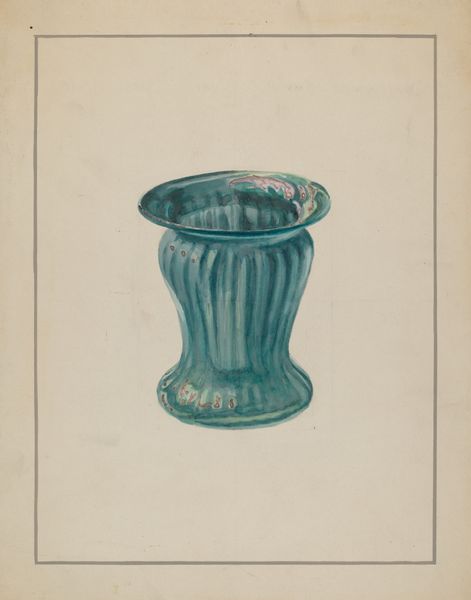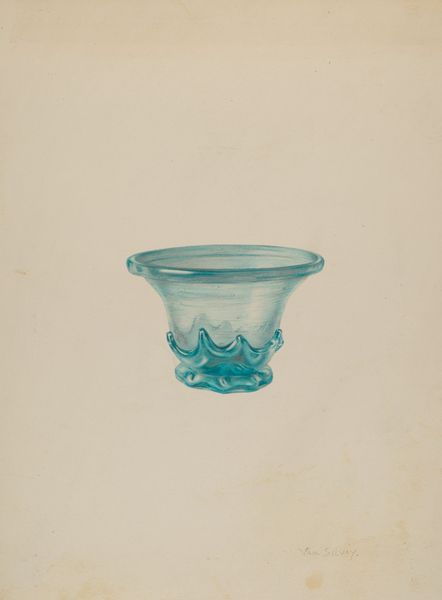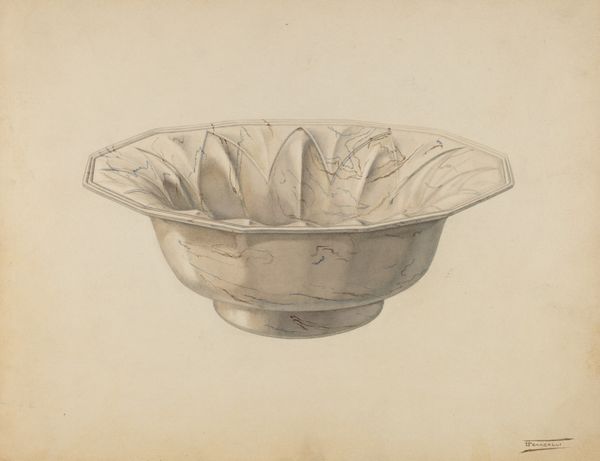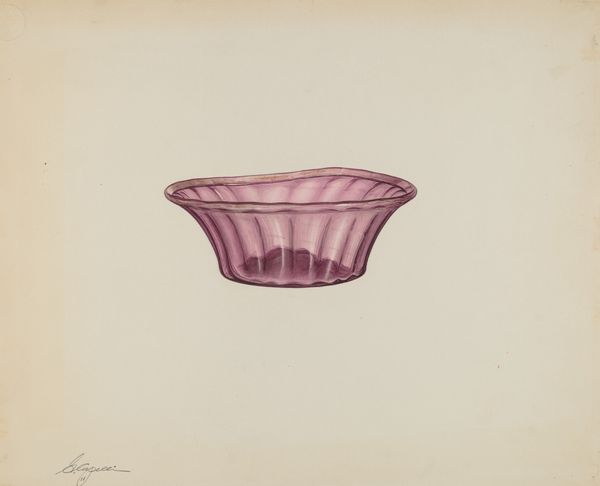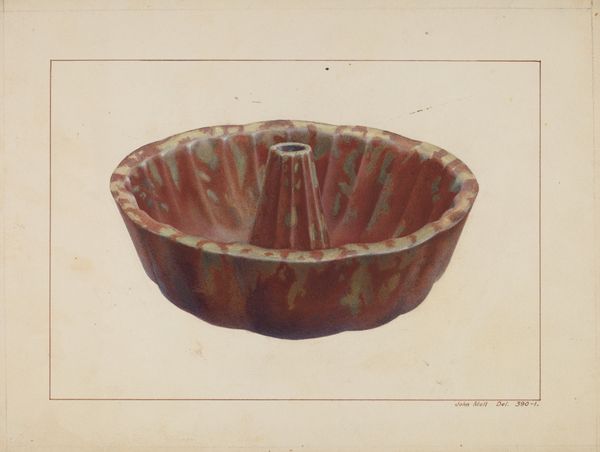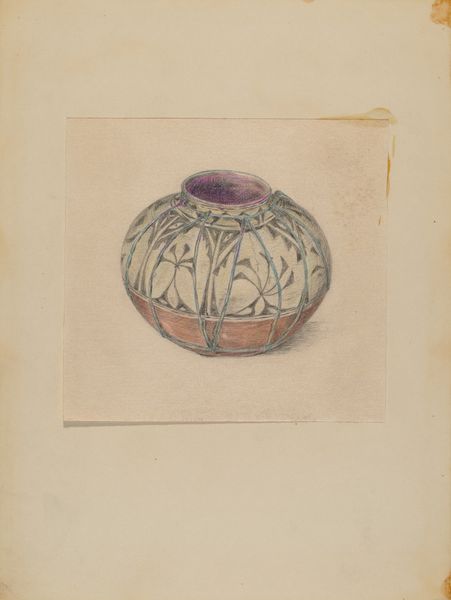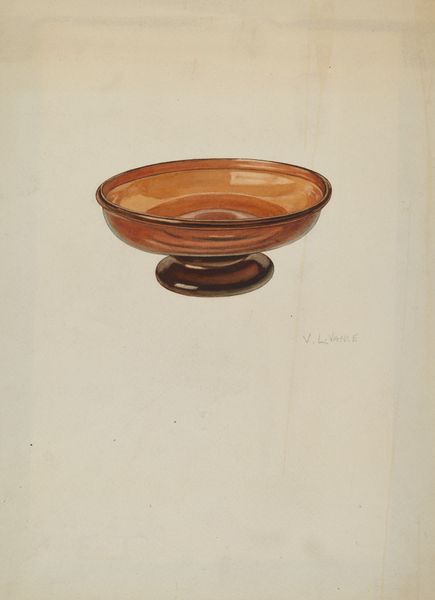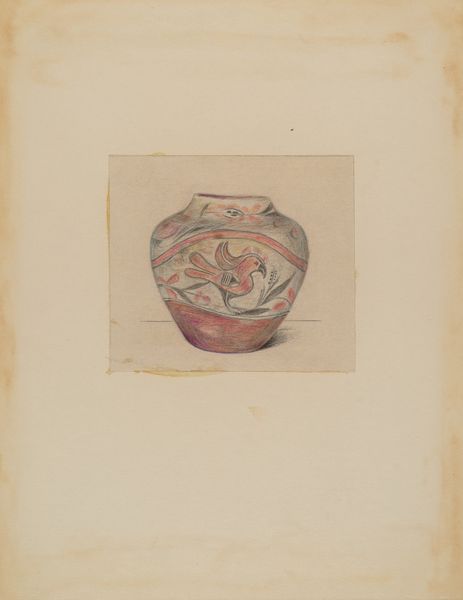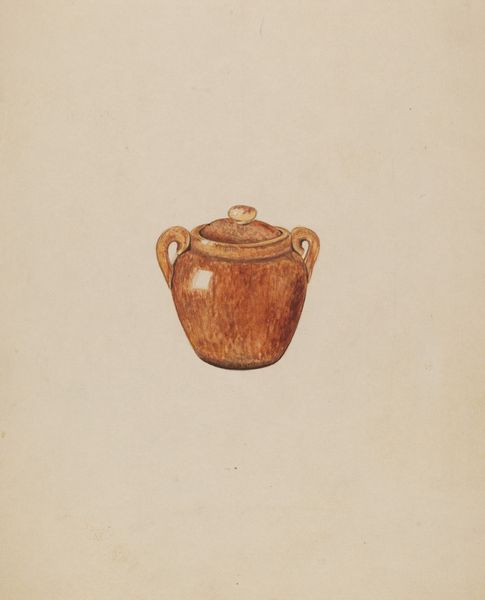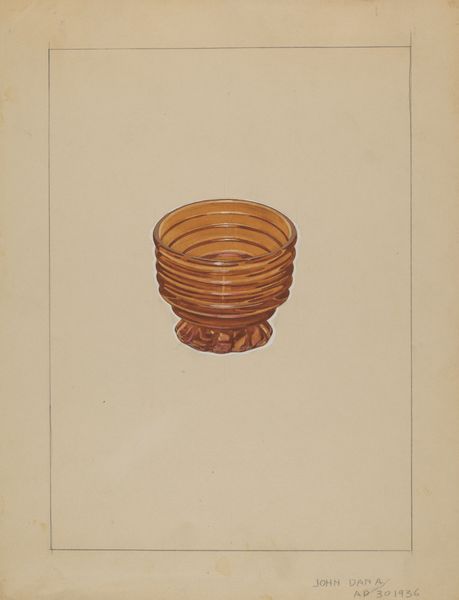
drawing, coloured-pencil, earthenware
#
drawing
#
coloured-pencil
#
charcoal drawing
#
oil painting
#
earthenware
#
acrylic on canvas
#
watercolor
Dimensions: overall: 29.1 x 22.4 cm (11 7/16 x 8 13/16 in.)
Copyright: National Gallery of Art: CC0 1.0
Editor: This is Ruth Bialostosky's "Earthenware, Jelly Mold," created between 1935 and 1942. I find it really charming, almost quaint, especially the repetitive fluted pattern. What do you see in this piece from a formalist perspective? Curator: Indeed, the piece is quite engaging. Notice how the artist utilizes the simple form of the jelly mold to explore tonal variations within a limited palette. The strategic use of light and shadow defines the object's volume. What does the color tell us? Editor: Well, the earthy tones, primarily shades of terracotta, give it a grounded, domestic feel. Is it meant to just showcase a shape? Curator: Perhaps. The essence lies not in representing a mold, but in the meticulous execution. Consider the linework, varying in pressure and density, to convey texture. There’s a dialectic between precision and fluidity. Are you interpreting a balance? Editor: I see what you mean! It's not just a mold; it's an exploration of form and light through these earthen hues. The artist’s control over the pencilwork is impressive. I hadn't fully appreciated the focus on pure form. Curator: Precisely. The object transcends its utility, becoming a vehicle for artistic expression, its structure celebrating its materiality. Ultimately, art re-imagines functional items through color and pattern. Editor: It's fascinating how a simple object, when viewed through a formalist lens, reveals so much about the artist’s technical skill and focus on form. I learned how paying attention to these technical qualities is very valuable. Curator: Indeed, it's the artist’s careful attention to these elements that elevates the commonplace into something truly remarkable.
Comments
No comments
Be the first to comment and join the conversation on the ultimate creative platform.

